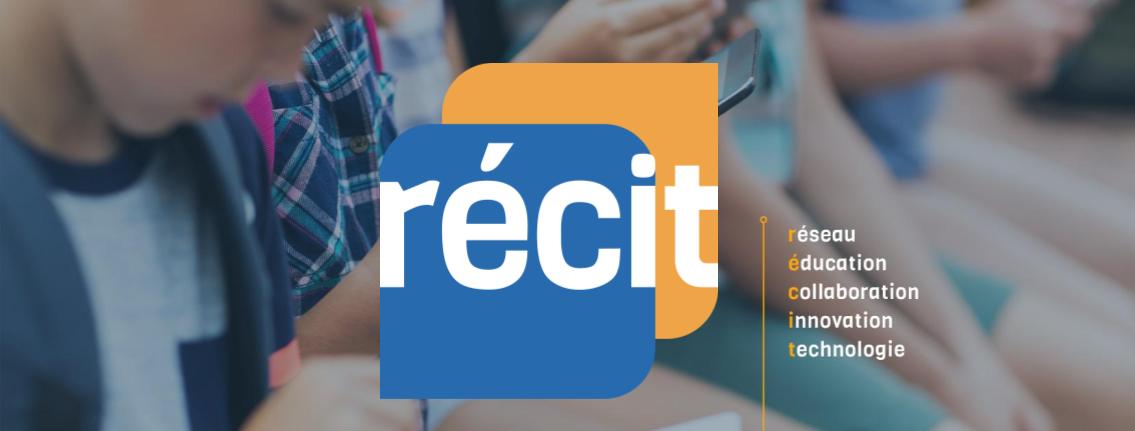En collaboration avec un groupe consultatif en provenance de toutes les régions du Canada, l’organisme Canada en programmation propose un Cadre de référence pancanadien pour l’enseignement de l’informatique. Celui-ci vise à harmoniser l’enseignement de l’informatique au pays, en suggérant notamment des thèmes et une progression des apprentissages.
Au Canada, plusieurs organisations œuvrent à promouvoir et à faciliter l’intégration de la programmation en contexte scolaire, généralement en formule parascolaire ou sur invitation dans les salles de classe. Cependant, les initiatives sont éclatées et diversifiées sur le territoire et les résultats restent « inéquitables ». De plus, « il n’y a pas consensus sur les compétences et les habiletés de base en informatique que tous les élèves devraient acquérir ainsi que sur le moment où elles devraient être enseignées ».
C’est devant ce constat, et souhaitant une plus grande unicité, que l’organisme Canada en programmation (qui est l’un des rares à être présent dans toutes les provinces et territoires) a mené les travaux d’un groupe consultatif, qui ont duré plus d’une année, afin de concevoir un Cadre de référence pancanadien pour l’enseignement de l’informatique. D’abord lancé en 2018, celui-ci a connu quelques mises à jour depuis.
Le document propose un fil conducteur pour l’enseignement de l’informatique de la maternelle à la 12e année au Canada. Il s’appuie sur une vision selon laquelle tous les élèves devraient être en mesure de :
- Créer des projets numériques,
- Analyser de manières critique les technologies et leur influence sur la société,
- Utiliser les technologies pour contribuer à la société.
5 domaines clés
Le corps du cadre de référence est composé du Guide des compétences en informatique qui, lui, s’articule autour de cinq domaines clés.
1. Programmation : algorithmes, structures de données, modularité, modélisation et abstraction, débogage.
2. Ordinateurs et réseaux : matériel informatique et logiciels, appareils connectés, dépannage, connectivité numérique, cybersécurité.
3. Données : stockage de données, collecte, classement et visualisation de données, modélisation et inférence, intelligence artificielle et apprentissage machine, gouvernance des données.
4. Technologies et société : effets des technologies numériques sur la société, communication numérique, éthique, sécurité et politique, technologie et environnement, histoire des technologies, technologie et bien-être.
5. Conception : conception de programme, conception pour les utilisateurs, conception graphique, conception universelle.
Pour chaque domaine et ses sous-thèmes, une progression des apprentissages est proposée en nommant un point de départ jusqu’aux compétences et habiletés qui devraient être acquises à la fin des études secondaires. Des possibilités d’enrichissement sont aussi recommandées pour poursuivre le parcours d’apprentissage. Finalement, des liens entre les domaines et les sous-thèmes sont établis, puisque « plusieurs idées d’un même thème renforcent d’autres composantes du guide ».

Les compétences et habiletés à atteindre
Voici les compétences et habiletés qui ont été déterminées comme des objectifs à atteindre pour les jeunes Canadiens.
Programmation
- Algorithmes : Concevoir un algorithme à l’aide d’une combinaison d’éléments informatiques, notamment les fonctions, les objets, les expressions conditionnelles et les tableaux.
- Structures de données : Créer une structure de données (p. ex., un tableau) pouvant être utilisée dans un programme.
- Modularité : Créer des modules pour diviser un programme informatique en plusieurs parties, ce qui peut être appliqué dans différents contextes de programmation.
- Modélisation et abstraction : Évaluer les limites d’un modèle ou d’un algorithme et concevoir de nouveaux modèles pour intégrer des abstractions et des comportements manquants.
- Débogage : Expliquer le processus d’essai d’un logiciel pour chercher des bogues et trouver des solutions à des problèmes prévisibles.
Ordinateurs et réseaux
- Matériel informatique et logiciels : Programmer un appareil physique qui collecte et échange des données entre les composants matériels et le logiciel.
- Appareils connectés : Créer un modèle pour montrer comment les appareils connectés collectent et échangent des données les uns entre les autres sans intervention d’une personne (communément appelé l’Internet des objets, (IdO)).
- Dépannage : Décrire les étapes suivies pour résoudre un problème de façon à ce que d’autres personnes puissent résoudre un problème technique similaire en suivant cette démarche.
- Connectivité numérique : Expliquer la relation entre les routeurs, les commutateurs, les serveurs, la topologie et l’adressage et en créer un modèle.
- Cybersécurité : Évaluer le rôle joué par les personnes dans les cyberattaques et les effets de celles-ci sur la population et la société.
Données
- Stockage de données : Évaluer les avantages et les désavantages de différents modèles de stockage, y compris l’infonuagique, en considérant des facteurs comme le coût, la vitesse, la fiabilité, l’accessibilité, la confidentialité et l’intégrité.
- Collecte, classement et visualisation de données : Développer un algorithme ou un programme simple pour classer et représenter un ensemble de données afin d’analyser des informations, de prédire des résultats ou d’inférer des tendances.
- Modélisation et inférence : Créer un modèle informatique selon des tendances observées dans des données et l’utiliser pour prédire des résultats.
- Intelligence artificielle et apprentissage machine : Évaluer l’intégration des biais humains dans les systèmes techniques et l’intelligence artificielle.
- Gouvernance des données : Comprendre et défendre ses droits par rapport aux données ainsi que ceux des autres.
Technologie et société
- Effets des technologies numériques sur la société : Évaluer les effets de l’informatique sur les différents groupes dans la société, y compris les femmes, les groupes raciaux, les minorités visibles, les personnes vivant avec un handicap et les peuples autochtones.
- Communication numérique : Utiliser un outil numérique pour collaborer et créer un projet numérique simple ou un projet de classe.
- Éthique, sécurité et politique : Évaluer les effets de la cybercriminalité, du piratage, de la distribution de virus et d’autres activités numériques illégales ou non éthiques sur la société.
- Technologie et environnement : Évaluer comment les technologies numériques peuvent servir à gérer et à faire la promotion de la durabilité de l’environnement.
- Histoire des technologies : Retracer l’évolution des technologies dans les différentes régions du monde et évaluer les types d’effets associés.
- Technologie et bien-être : Développer des stratégies pour exploiter le potentiel de la technologie afin d’améliorer sa santé physique et mentale et son bien-être.
Conception
- Conception de programmes : Consigner et justifier sa démarche informatique ou celle de son équipe en créant un programme afin que d’autres personnes puissent suivre et comprendre les étapes.
- Conception pour les utilisateurs : Collaborer avec d’autres personnes pour obtenir des rétroactions sur un projet numérique créé par soi-même ou par son équipe, déterminer des aspects à améliorer et appliquer des changements.
- Conception graphique : Appliquer des principes de conception d’interface utilisateur pour créer un projet numérique à la fois pratique et agréable visuellement.
- Conception universelle : Créer un projet convivial qui répond aux normes d’accessibilité provinciales ou d’autres normes connues et prend en considération la diversité des expériences humaines.
L’organisme Canada en programmation est financé par le gouvernement fédéral. Il a déjà établi des partenariats avec le personnel enseignant dans toutes les provinces, en offrant différents programmes et activités de programmation (Ados en programmation, Filles en programmation, Enseignants en programmation, etc.).
À voir aussi : Le numéro du printemps 2022 du magazine École branchée : La programmation informatique : comment développer cette habileté?






